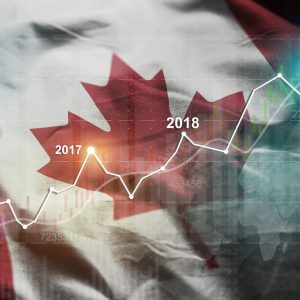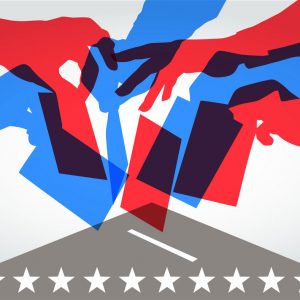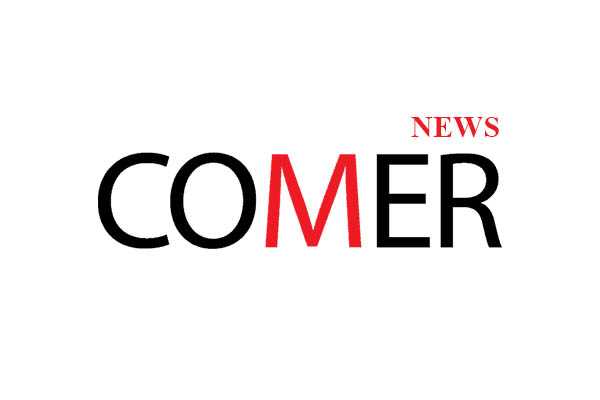By Henry A. Giroux, Social Project, The Bullet, August 20, 2018
The nightmares that have shaped the past and await return slightly just below the surface of American society are poised to wreak havoc on us again. America has reached a distinctive crossroads in which the principles and practices of a fascist past and neoliberal present have merged to produce what Philip Roth once called “the terror of the unforeseen.”
Since the 1970s, American society has lived with the curse of neoliberalism, or what can be called the latest and most extreme stage of predatory capitalism. As part of a broader comprehensive design, neoliberalism’s overriding goal is to consolidate power in the hands of the financial elite. As a mode of rationality, it functions pedagogically in multiple cultural sites to ensure no alternatives to its mode of governance can be imagined or constructed.
Central to its philosophy is the assumption the market drives not just the economy but all of social life. It construes profitmaking as the essence of democracy and consuming as the only operable form of agency. It redefines identities, desires and values through a market logic that favors selfinterest, a survival-of-the-fittest ethos and unchecked individualism. Under neoliberalism, life-draining and unending com-petition is a central concept for defining human freedom.
Neoliberalism: Free Rein to Finance Capital and All-Encompassing Market
As an economic policy, it creates an all-encompassing market guided by the principles of privatization, deregulation, commodification and the free flow of capital. Advancing these agendas, it weakens unions, radically downsizes the welfare state and wages an assault on public goods. As the state is hollowed out, big corporations take on the functions of government, imposing severe austerity measures, redistributing wealth upward to the rich and powerful and reinforcing a notion of society as one of winners and losers. Put simply, neoliberalism gives free rein to finance capital and seeks to liberate the market from any restraints imposed by the state. At present, governments exist preeminently to maximize the profits, resources and the power of the wealthy.
As a political policy, it empties governance of any substance and denounces any viable notion of the social contract. More-over, neoliberalism produces widespread misery and suffering as it weakens any vestige of democracy that interferes with its vision of a self-regulating market.
4 | Economic ReformNovember–December 2018 www.comer.org Theoretically, neoliberalism is often associated with the work of Friedrich August von Hayek and the Mont Pelerin Society, Milton Friedman and the Chicago school of economics, and most famously with the politics of Augusto Pinochet in Chile, President Ronald Reagan in the United States and Prime Minister Margaret Thatcher in the United Kingdom. Politically, it is sup-ported by various right-wing think tanks such as the Heritage Foundation and by billionaires such as the Koch brothers.
Neoliberalism’s hatred of democracy, the common good and the social contract has unleashed generic elements of a fascist past in which white supremacy, ultra-national-ism, rabid misogyny and immigrant fervor come together in a toxic mix of militarism, state violence and the politics of disposability. Modes of fascist expression adapt variously to different political historical contexts assuring racial apartheid-like forms in the postbellum US and overt encampments and extermination in Nazi Germany. Fascism – with its unquestioning belief in obedience to a powerful strongman, violence as a form of political purification, hatred as an act of patriotism, racial and ethnic cleansing, and the superiority of a select ethnic or national group – has resurfaced in the United States. In this mix of economic barbarism, political nihilism, racial purity, economic orthodoxy and ethical somnambulance, a distinctive economic-political formation has been produced that I term neoliberal fascism.
Neoliberalism as the New Fascism
The war against liberal democracy has become a global phenomenon. Authoritarian regimes have spread from Turkey, Poland, Hungary and India to the United States and a number of other countries. Right-wing populist movements are on the march, spewing forth a poisonous mix of ultranationalism, white supremacy, antiSemitism, Islamophobia and xenophobia. The language of national decline, humiliation and demonization fuels dangerous proposals and policies aimed at racial purification and social sorting while hyping a masculinization of agency and a militarism reminiscent of past dictatorships. Under current circumstances, the forces that have produced the histories of mass violence, torture, genocide and fascism have not been left behind. Consequently, it has been more difficult to argue that the legacy of fascism has nothing to teach us regarding how “the question of fascism and power clearly be-longs to the present.”1
Fascism has multiple histories, most connected to the failed democracies in Italy and Germany in the 1930s and the overthrow of democratic governments by the military such as in Argentina and Chile in the 1970s. Moreover, the history between fascism and populism involves a complex mix of relations over time.2 What is distinctive about this millennial fascism is its history of “a violent totalitarian order that led to radical forms of political violence and genocide” has been softened by attempts to recalibrate its postwar legacy to a less liberal democratic register.3 For instance, in Hungary, Turkey, Poland and a number of other emerging fascist states, the term “illiberal democracy” is used as code to allegedly replace a “supposedly outmoded form of liberal democracy.”4 In actuality, the term is used to justify a form of populist authoritarianism whose goal is to attack the very foundations of democracy. These fascist underpinnings are also expanding in the United States. In President Donald Trump’s bombastic play-book, the notion of “the people” has become a rhetorical tool to legitimize a right-wing mass movement in support of a return to the good old days of American Apartheid.5
As the ideas, values and institutions crucial to a democracy have withered under a savage neoliberalism that has been 50 years in the making, fascistic notions of racial superiority, social cleansing, apocalyptic populism, hyper-militarism and ultra-na-tionalism have gained in intensity, moving from the repressed recesses of US history to the centers of state and corporate power.6Decades of mass inequality, wage slavery, the collapse of the manufacturing sector, tax giveaways to the financial elite and savage austerity policies that drive a frontal attack on the welfare state have further strengthened fascistic discourses. They also have redirected populist anger against vulnerable populations and undocumented immigrants, Muslims, the racially oppressed, women, LBGTQ people, public servants, critical intellectuals and workers. Not only has neoliberalism undermined the basic elements of democracy by escalating the mutually reinforcing dynamics of economic inequality and political inequality – accentuating the downhill spiral of social and economic mobility – it has also created conditions that make fascist ideas and principles more attractive.
Under these accelerated circumstances, neoliberalism and fascism conjoin and advance in a comfortable and mutually compatible movement that connects the worst excesses of capitalism with authoritarian “strongman” ideals – the veneration of war, a hatred of reason and truth; a celebration of ultranationalism and racial purity; the suppression of freedom and dissent; a culture that promotes lies, spectacles, scapegoating the other, a deteriorating discourse, brutal violence, and, ultimately, the eruption of state violence in heterogeneous forms. In the Trump administration, neoliberal fascism is on steroids
and represents a fusion of the worst dimensions and excesses of gangster capitalism with the fascist ideals of white nationalism and racial supremacy associated with the horrors of the past.7 Neoliberal structural transformation has undermined and refigured “the principles, practices, cultures, subjects and institution of democracy understood as rule by the people.”8 Since the earlier ’70s, the neoliberal project has mutated into a revolt against human rights and democracy and created a powerful narrative that refigures freedom and authority so as to legitimize and produce massive inequities in wealth and power.9 Its practices of offshoring, restructuring everything according to the dictates of profit margins, slashing progressive taxation, eliminating corporate regulations, allowing unchecked privatization and the ongoing commercializing of all social interactions “inflicts alienating misery” on a polity newly vulnerable to fascist ideals, rhetoric and politically extremist movements.10
Furthermore, the merging of neoliberalism and fascism has accelerated as civic culture is eroded, notions of shared citizenship and responsibility disappear, and reason and informed judgment are replaced by the forces of civic illiteracy. State-sanctioned at-tacks on the truth, facts and scientific reason in Trump’s America are camouflaged as one would expect when led by the first reality TV president – by a corporate-controlled culture of vulgarity that merges celebrity culture with a nonstop spectacle of violence. Neoliberalism strips democracy of any sub-stance by promoting an irrational belief in the ability of the market to solve all social problems and shape all aspects of society. This shift from a market economy to a market-driven society has been accompanied by a savage attack on equality, the social contract and social provisions as wages have been gutted, pensions destroyed, health care put out of reach for millions, job security undermined, and access to crucial public goods such as public and higher education considerably weakened for the lower and middle classes.
In the current historical moment, neoliberalism represents more than a form of hyper-capitalism, it also denotes the death of democracy if not politics itself. Anis Shivani’s articulation of the threat neoliberalism poses to democracy is worth quoting at length:
“Neoliberalism believes that markets are self-sufficient unto themselves, that they do not need regulation, and that they are the best guarantors of human welfare. Every-thing that promotes the market, i.e., privatization, deregulation, mobility of finance and capital, abandonment of government-provided social welfare, and the reconception of human beings as human capital, needs to be encouraged, while everything that supposedly diminishes the market, i.e., government services, regulation, restrictions on finance and capital, and conceptualization of human beings in transcendent terms, is to be discouraged…. One way to sum up neoliberalism is to say that everything – everything – is to be made over in the image of the market, including the state, civil society, and of course human beings. Democracy becomes reinterpreted as the market, and politics succumbs to neoliberal economic theory, so we are speaking of the end of democratic politics as we have known it for two and a half centuries.”11
What is particularly distinctive about the conjuncture of neoliberalism and fascism is how the fullfledged liberation of capital now merges with an out-and-out attack on the racially oppressed and vulnerable populations considered disposable. Not only do the oppressive political, economic and financial structures of casino capitalism bear down on people’s lives, but there is also a frontal attack on the shared understandings and beliefs that hold a people together. One crucial and distinctive place in which neoliberalism and fascism converge is in the undermining of social bonds and moral boundaries. Displacement, disintegration, atomization, social isolation and deracination have a long history in the United States, which has been aggressively exploited by Trump, taking on a distinctively right-wing, 21st-century register. There is more at work here than the heavy neoliberal toll of social abandonment. There is also, under the incessant pedagogical propaganda of right-wing and corporate controlled media, a culture that has become cruel and cultivates an appetite for maliciousness that undermines the capacity for empathy, making people indifferent to the suffering of others or, even worse, willing participants in their violent exclusion.
Irish journalist Fintan O’Toole warns that fascism unravels the ethical imagination through a process in which individuals eventually “learn to think the unthinkable…” followed, he writes, “by a crucial next step, usually the trickiest of all”: “You have to undermine moral boundaries, inure people to the acceptance of acts of extreme cruelty. Like hounds, people have to be blooded. They have to be given the taste for savagery. Fascism does this by building up the sense of threat from a despised out-group. This allows the members of that group to be dehumanized. Once that has been achieved, you can gradually up the ante, working through the stages from breaking windows to extermination.”12
What is often labeled as an economic crisis in American society is also a crisis of morality, sociality and community. Since the 1970s, increasing unregulated capitalism has hardened into a form of market fundamentalism that has accelerated the hollowing out of democracy through its capacity to reshape the commanding political, social and economic institutions of American society, making it vulnerable to the fascist solutions proposed by Trump. As an integrated system of structures, ideologies and values, neoliberalism economizes every aspect of life, separates economic activity from social costs, and depoliticizes the public through corporate-controlled disimagination machines that trade in posttruth narratives, enshrine the spectacle of violence, debase language and distort history.
Neoliberalism now wages a battle against any viable notion of the social contract, solidarity, the collective imagination, the public good and the institutions that support them. As the realm of the political is defined in strictly economic terms, the institutions, public goods, formative cultures and modes of identity essential to a democracy disappear, along with the informed citizens necessary to sustain them.
The Crisis of Reason and Fantasies of Freedom
As more and more power is concentrated in the hands of a corporate and financial elite, freedom is defined exclusively in market terms, inequality is cast as a virtue, and the logic of privatization heaps contempt upon civic compassion and the welfare state. The fatal after-effect is that neoliberalism has emerged as the new face of fascism.13With the 50-year advance of neoliberalism, freedom has become its opposite. And democracy, once the arc of civic freedom, now becomes its enemy, because democratic governance no longer takes priority over the unchecked workings of the market. Neoliberalism undermines both the social and the public and in doing so weakens the idea of shared responsibilities and moral obligations. As Zygmunt Bauman argues “ethical tranquillization” is now normalized under the assumption that freedom is limited to the right to only advance one’s own interests and the interests of the markets. Freedom in the neoliberal playbook disavows any notion of responsibility outside of the responsibility to oneself.
As Wendy Brown argues, politics and democracy are now viewed as the enemy of markets and “politics is cast as the enemy to freedom, to order and to progress.”14Politics now becomes a mix of regressive notions of freedom and authority whose purpose is to protect market-driven principles and practices. What disappears in this all-encompassing reach of capital is the notion of civic freedom, whi
ch is replaced by securitization organized to protect the lawless workings of the profit motive and the savagery of neoliberal austerity policies. Moreover, as freedom becomes privatized, it feeds a lack of interest in politics and breeds moral indifference. As a consequence, neoliberalism unleashes the passions of a fascist past in which the terrain of politics, agency and social relations begin to resemble a war zone, a blood sport and a form of cage fighting.
In this instance, the oppressed are not only cheated out of history, they are led to believe that under neoliberal fascism there are no alternatives and the future can only imitate the present. Not only does this position suppress any sense of responsibility and resistance, it produces what Timothy Snyder calls “a kind of sleepwalking, and has to end with a crash.”15 The latter is reinforced by a government that believes truth is dangerous and reality begins with a tweet that signals the legitimation of endless lies and forms of power that infantilize and depoliticize, because they leave no room for standards of language capable of holding power account-able. Even worse, Trump’s war on language and truth does more than limit freedom to competing fictions, it also erases the distinction between moral depravity and justice, good and evil. As I have said elsewhere, “Trump’s Ministry of Fake News works incessantly to set limits on what is thinkable, claiming that reason, evidence, consistency,and logic no longer serve the truth, because the latter are crooked ideological devices used by enemies of the state. ‘Thought crimes’ are now labeled as ‘fake news.’”16
Timothy Snyder is right in arguing that “to abandon facts is to abandon freedom. If nothing is true, then no one can criticize power, because there is no basis upon which to do so. If nothing is true, then all is spectacle.”17 The post-truth society is a state-sponsored diversion and spectacle. Its purpose is to camouflage a moral and political crisis that has put into play a set of brutal neoliberal arrangements. Rather than view truth as the currency of democracy, Trump and his acolytes view it and democracy as the enemy of power. Such arrangements put democracy at risk and create an educational and political project receptive to the political currency of white supremacy. As a master of schlock performance, Trump tweets and speaks largely to his angry, resentful base, often using crude language in which the threat of violence and repression appears to function for his audience as a source of “romance, pleasure and fantasy.”18 These core supporters represent, at best, what Philip Roth once generously called the “uneducated and overburdened.” But they also cultivate what Erin Aubry Kaplan calls “the very worst American impulses, from xenophobia to know-nothingism to disdain for social necessities such as public education and clean water, [and their] signature quality is racism.”19
Restaging Fascism Within Democracy
Rather than disappear into the memory hole of history, fascism has reappeared in a different form in the United States, echoing Theodor Adorno’s warning, “I consider the survival of National Socialism within democracy to be potentially more menacing than the survival of fascist tendencies against democracy.”20 Theorists, novelists, historians and writers that include such luminaries as Hannah Arendt, Sinclair Lewis, Bertram Gross, Umberto Eco, Robert O. Paxton, Timothy Snyder, Susan Sontag and Sheldon Wolin have argued convincingly that fascism remains an ongoing danger and has the ability to become relevant under new conditions. After the fall of Nazi Germany, Arendt warned totalitarianism was far from a thing of the past because the conditions of extreme precarity and uncertainty that produce it were likely to crystallize into new forms.21
What Arendt thought was crucial for each generation to recognize was that the presence of the Nazi camps and the policy of extermination should be understood not only as the logical outcome of a totalitarian society or simply a return of the past, but also for what their histories suggest about forecasting a “possible model for the future.”22 The nightmare of fascism’s past can-not escape memory because it needs to be retold over and over again so as to recognize when it is happening again. Rather than fade into the past, mass poverty, unchecked homelessness, large-scale rootlessness, fear-mongering, social atomization, state terrorism and the politics of elimination have provided the seeds for new forms of fascism to appear. Paxton, the renowned historian of fascism, argues in his The Anatomy of Fascism that the texture of American fascism would not mimic traditional European forms but would be rooted in the language, symbols and culture of everyday life:
“No swastikas in an American fascism, but Stars and Stripes (or Stars and Bars) and Christian crosses. No fascist salute, but mass recitations of the Pledge of Allegiance. These symbols contain no whiff of fascism in themselves, of course, but an American fascism would transform them into obligatory litmus tests for detecting the internal enemy.”23
Given the alarming signs that have come into play under the Trump administration, it is hard to look away and condone the suppression of the history and language of fascism and its relevance for understanding America’s flight from the promise and ideals of a substantive democracy. This is not to suggest the only template for addressing the legacy of fascism is to point to Nazi Ger-many, the most extreme of the fascist states, or, for that matter, to Mussolini’s brand of fascism. Not only does the comparison not work, but it tends to understand fascist ideals only against its most extreme expressions.
While it is true the US may not be put-ting millions in gas chambers or promoting genocide, there remain reworked elements of the past in the present. For instance, there are already echoes of the past in existing and expanding infrastructures of punishment – amounting to a carceral state – that have grown exponentially in the past four decades. In fact, the United States has the largest prison system in the world, with more than 2.5 million people incarcerated. Astonishingly, this figure does not include immigrant detention centers and other forms of encampment around the US border with Mexico. The visibility of this state-sanctioned punishing apparatus and its similarity to a fascist history was on display recently with the caging of young immigrant children who were forcibly separated from their parents at the southern border for months at a time. Needless to say, such institutions and actions resonate with deeply disturbing events of a dark past for which the violent separation of families was a hallmark feature of fascist brutality.
Reports of widespread abuse of imprisoned unaccompanied migrant children separated from their parents are increasingly being reported in the press. Detained under inhumane and cruel conditions, many of these children in government detention centers are allegedly being drugged, sexually abused, and subject to a range of inhumane actions. In Texas, a federal judge ordered a detention center to stop forcing children to take psychotropic drugs such as Clonazepam, Divalproex, Benztropine and Duloxetine in order to control their behavior. Needless to say, such actions, policies, and institutions resonate with deeply disturbing events of a dark past in which the violent separation of families was a hallmark feature of fascist cruelty, barbarism and brutality.
It is against this background that I believe the current debates that dismiss whether the US under Trump is a fascist society are unproductive. The argument against this recognition generally proceeds by claiming either fascism is a relic of the past, fixed in a certain historical period with no relevance to the present, or that the differences be-tween Trump’s policies and those
of Hitler and Mussolini are enough so as to make any comparison irrelevant. Many commentators denounce any references to Trump and Nazis in the past as exaggerated, extreme or inapplicable. In this view, fascism is always somewhere else, relegated to a time and a place that suggests an accommodating distance, one that runs the risk of disconnecting historical memory and the horrors of another age from the possibility of fascism resurrected in a different form, newly attuned to its moment. We live in an age in which there is a terror on the part of critics to imagine the plasticity of fascism.
The Mobilizing Passions of Fascism
Fascism is neither a static nor fixed moment in history, and the forms it takes do not have to imitate earlier historical models. It is an authoritarian ideology and a form of political behavior defined by what Paxton calls a series of “mobilizing passions.” These include an open assault on democracy, the call for a strongman, a contempt for human weakness, an obsession with hyper-masculinity, an aggressive militarism, an appeal to national greatness, a disdain for the feminine, an investment in the language of cultural decline, the disparaging of human rights, the suppression of dissent, a propensity for violence, disdain for intellectuals, a hatred of reason, and fantasies of racial superiority and eliminationist policies aimed at social cleansing.24
The ghost of fascism has to be retrieved from history and restored to a “proper place in the discussions of the moral and political limits of what is acceptable,”25 especially at a moment when the crisis of democracy can-not be separated from the crisis of neoliberalism. As a heuristic tool to compare forms of state power, the legacy of fascism offers an opportunity to recognize when authoritarian signposts are on the horizon.
For example, under Trump, the spectacle reigns supreme, harking back to an earlier time in history when bravado, armed ignorance and theatrical performances provided a model of community that squelched memory, domesticated thought and opened the door for a strongman’s followers to disavow their role as critical agents in favor of becoming blind, if not willful, spectators. With regards to the present, it is crucial to recognize the ascendancy of Trump politically within rather than against the flow of history.
Fascism in the United States has arrived slowly by subversion from within. Its roots have been on display for decades and emerged most visibly with President George W. Bush’s and then President Barack Obama’s war on terror. Bush, in particular, embraced unapologetically a raw display of power that sanctioned torture, domestic spying, secret prisons, kill lists, laws sanctioning indefinite detention, warrantless searches and war crimes. Obama did little to correct these legal illegalities and Trump has only breathed new life into them. Instead of the sudden appearance on American streets of thugs, brown shirts, purges and massive state violence – the state violence waged against African Americans notwithstanding – fascism has been resurrected through the enabling force of casino capitalism, which has unleashed and mobilized a range of economic, political, religious and educational fundamentalisms.
This is most obvious in the subversion of power by the financial and corporate robber barons, the taming of dissent, the cultivation of tribal identities, the celebration of orbits of self-interests and hyper-individualism over the common good, the privatization and deregulation of public life and institutions, the legitimation of bigotry and intolerance, the transformation of elections into a battle among billionaires, and the production of a culture of greed and cruelty. But, as political theorist Wendy Brown makes clear, it is also obvious in a populist revolt generated by neoliberalism’s decimation of “livelihoods and neighbor-hoods,” “evacuating and delegitimizing democracy,” “devaluing knowledge apart from job training,” and the “eroding of national sovereignty.”26
Orthodoxy, especially under Trump, has transformed education into a workstation for ignorance in which harsh discipline is metered out to poor students and youths of color. Politics has been utterly corrupted by big money and morally deficient bankers, hedge fund managers and corporate moguls. And many evangelicals and other religious groups support, or are complicit with, a president who sides with white supremacists and trades in the language of viciousness and brutality.27
The corporate state, fueled by a market fundamentalism and a long legacy of racial apartheid, has imposed almost in-comprehensible cruelty on poor and vulnerable black populations. The merging of neoliberalism and fascist elements of white supremacy and systemic racism is particularly evident in the environmental racism, dilapidated schools and air pollution that have come to light recently.28 The short list includes going so far as to sacrifice poor black children in Flint, Mich., to the perils of lead poisoning to increase profits, subject the population of Puerto Rico to unnecessary despair by refusing to provide adequate government services after Hurricane Maria,29 and creating conditions in which “America’s youngest children, some 47 percent” under the age of 5, “live in low-income or poor households.”30 W.E.B. Du Bois’ notion of a “racial dictatorship” in his classic Black Reconstruction in America has been resurrected under Trump.
As UN Special Rapporteur Philip Alston reported, amid a massive concentration of wealth among the upper 1 percent in the United States, 40 million people live in poverty and 18.5 million Americans live in extreme poverty. According to Alston, such neoliberal policies are “aggressively regressive” in their promoting of harsh work requirements for welfare recipients, cutting back programs to feed poor children, and the willingness to both incarcerate young children and separate them from their parents.31 All the while, the Trump administration has shifted massive resources to the wealthy as a result of a tax policy that shreds $1.5 trillion from the federal budget.
Since the 1970s, wages have stagnated, banks have cheated millions out of their homes through rigged mortgage policies, and the political power brokers have imposed financial ruin on minorities of class and race.32 The war against poverty initiated by President Lyndon B. Johnson’s administration had been transformed into a war on poverty by President Ronald Reagan and has accelerated and achieved its apotheosis under the Trump regime. With a pathological enthusiasm, Trump’s morally bereft Republican Congress has cut crucial benefits for the poor, such as the food stamp program, while also imposing harsh work requirements on Medicare recipients. There is more at work here than the self-serving and vindictive neoliberal belief that government is bad when it gets in the way of markets and does not serve the interest of the rich. There is also willfully savage support for massive degrees of inequality, human wretchedness, the criminalization of social problems, and a burgeoning culture of punishment, misery and suffering.
One consequence is a beleaguered American landscape marked by the growing opioid crisis, the criminalization of peaceful protests, race-based environmental poisoning, shorter longevity rates for middle-aged Americans, and an incarceration rate that ranks as the highest in the world. The war on democracy has also morphed into a war on youth as more and more children are homeless, subjected to mass school shootings, inhabit schools modeled after prisons, and increasingly ushered into the school-to-prison pipeline and disciplinary apparatuses that treats them as criminals.33 Under the long history of neoliberalism in the United States, there has developed a perverse investment in the degradation and punishment of the most vulnerable i
ndividuals, those considered other, and an increasing register of those considered disposable.34







